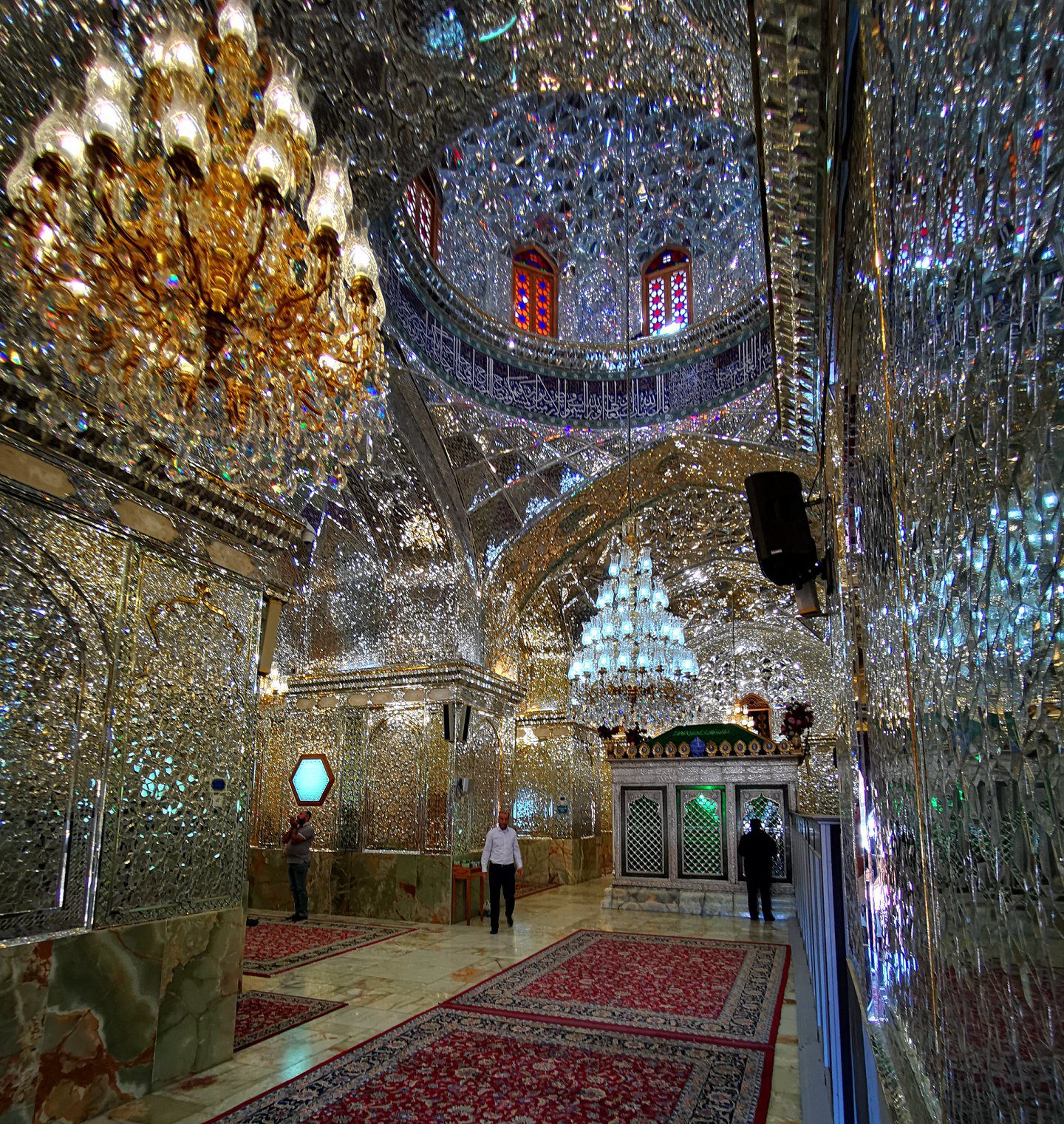SHIRAZ TRAVEL GUIDE
Things to Do in Shiraz – Activities & Attractions
—————————Ο————————
The heartland of the Persian civilization, Shiraz is the capital of the Fars Province and one of the most popular travel destinations in Iran. The earliest references to the city date back to 2000 BC and it has been an important trading centre for over a thousand years. It was briefly the country’s capital on two occasions in the Zand and Saffavid eras. It is famous for its poets, including Hafez and Saadi. Pleasant in every season thanks to a mild climate, spring is the best time to go to evoke all the clichés Iran is famous for: jasmine-scented streets, orange blossom tea, poets and nightingales.
Located in central Iran, whether you like history, art, poetry or nature, Shiraz has something to offer even to the most demanding tourists. Get lost in its gardens, join Iranians reading Hafez’s poems while sitting on his grave and get intoxicated by the scent of herbs and spices at the city’s old bazaar.
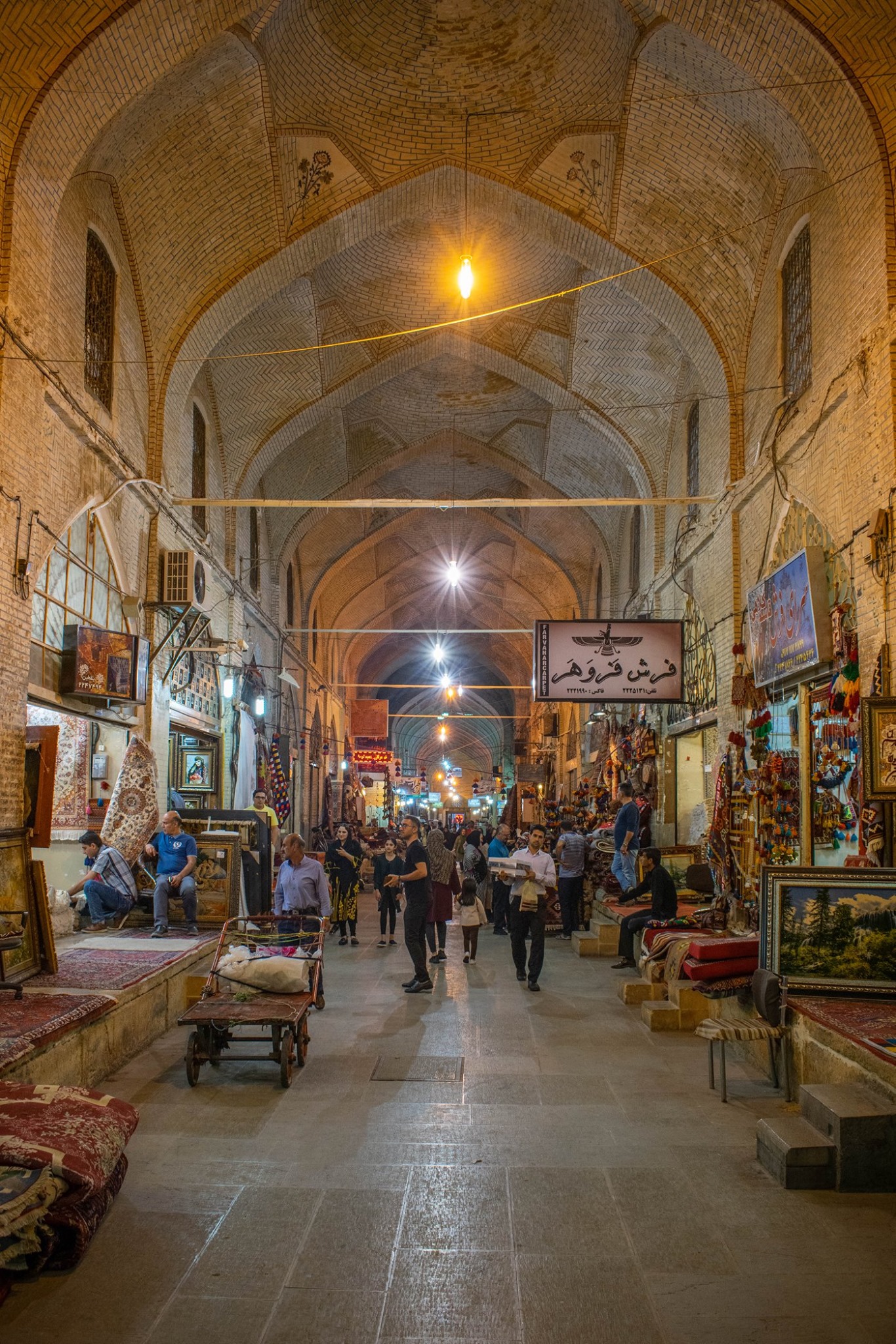 Vakil Bazaar is the most famous of Shiraz’s markets. With its wide brick avenues, it is more roomy than most and was originally intended to enhance Shiraz’s role as a trading centre in the Zand era when it was built by Karim Khan. It acts as a living ethnographic museum and is a great place to people-watch, with frequent visitors from the Persian Gulf, various Nomadic tribes and people from all over Southern Iran. The lovely Serai Mushir is a caravanserai near the Southern Vakil Bazaar that is also worth visiting.
Vakil Bazaar is the most famous of Shiraz’s markets. With its wide brick avenues, it is more roomy than most and was originally intended to enhance Shiraz’s role as a trading centre in the Zand era when it was built by Karim Khan. It acts as a living ethnographic museum and is a great place to people-watch, with frequent visitors from the Persian Gulf, various Nomadic tribes and people from all over Southern Iran. The lovely Serai Mushir is a caravanserai near the Southern Vakil Bazaar that is also worth visiting.
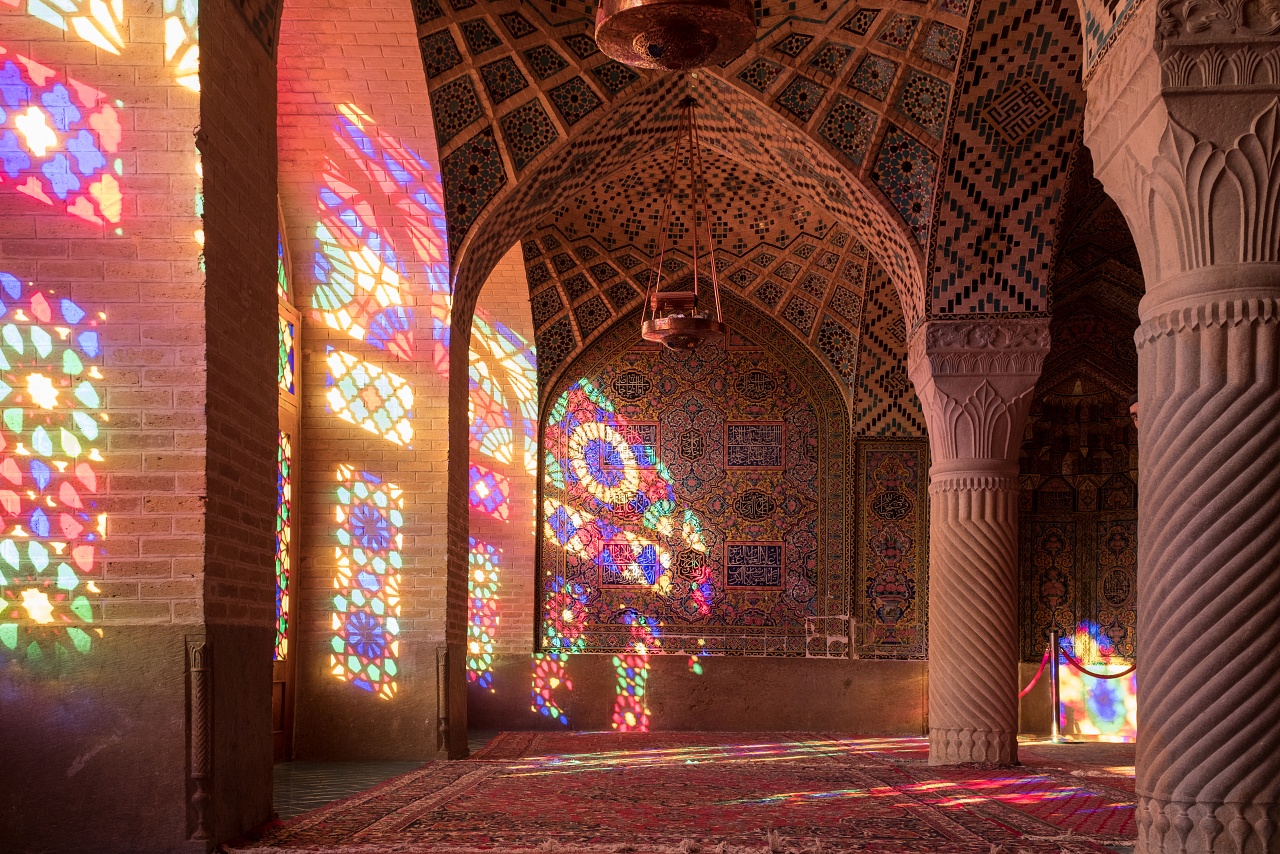 Nasir Ol Molk was a wealthy governor of Shiraz during the Qajar era and built this private mosque to his own personal taste. It is a very colourful affair known as the “Pink Mosque” for its liberal use of pink tiles. Its design follows advanced mathematical and geometrical patterns and the wooden elements are made from expensive walnut wood. Some bricks are also made of wood and were designed to insulate the building from earthquakes. There is also a well that used cows to pull up water. The mosque, however, is most famous for its stained glass windows.
Nasir Ol Molk was a wealthy governor of Shiraz during the Qajar era and built this private mosque to his own personal taste. It is a very colourful affair known as the “Pink Mosque” for its liberal use of pink tiles. Its design follows advanced mathematical and geometrical patterns and the wooden elements are made from expensive walnut wood. Some bricks are also made of wood and were designed to insulate the building from earthquakes. There is also a well that used cows to pull up water. The mosque, however, is most famous for its stained glass windows.
is a 19th century shrine built on the site of older shrines. The current incarnation boasts a huge bulbous Shirazi dome, stained glass windows that allow plenty of light to enter and mirror work that is truly dazzling.
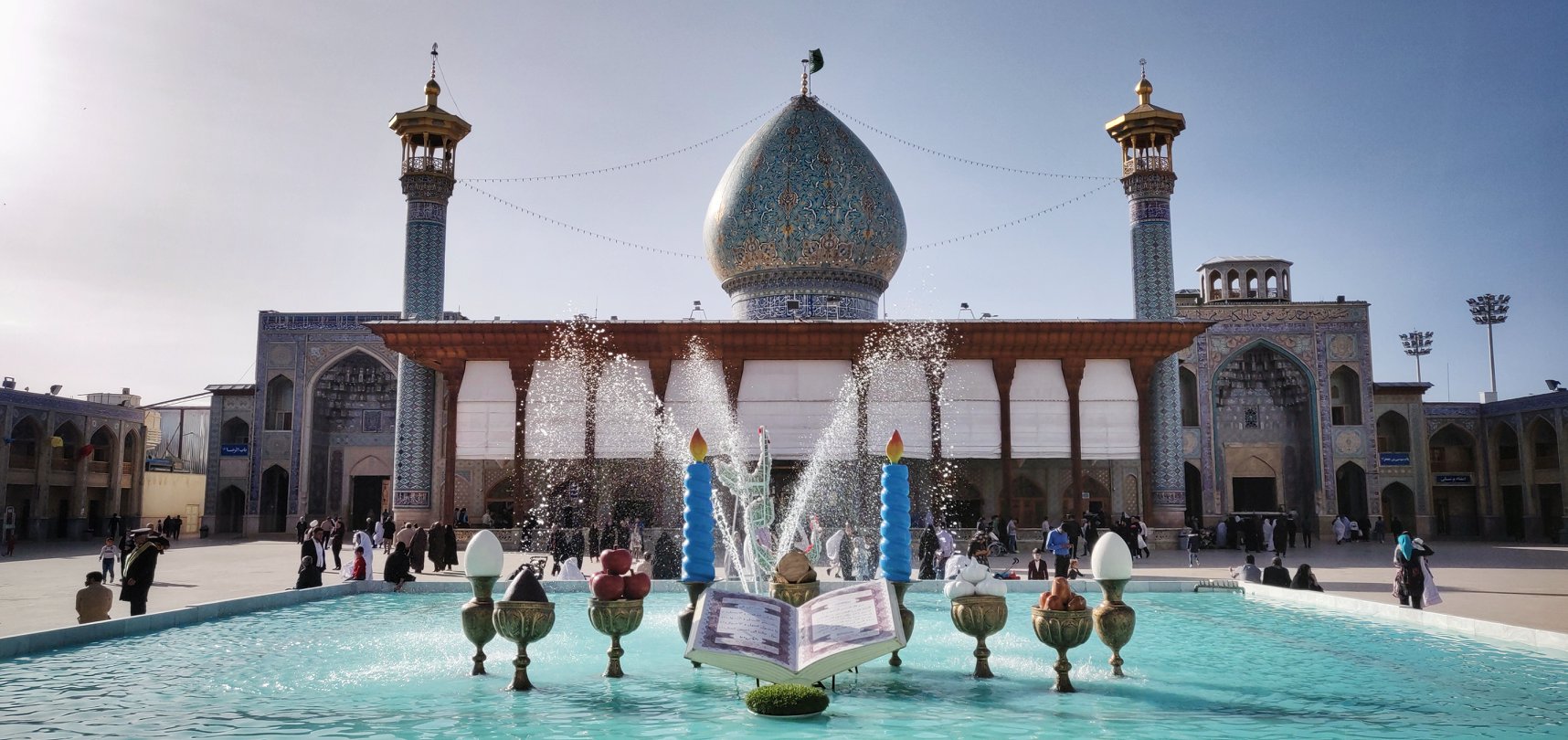 Shah-e cheragh , Mir Seyyed Ahmad is the main shrine mausoleum in Shiraz; he is son of Seventh Imam, Mosa Kazem (AS) known as Shah-e-Cheragh which is located near new mosque in Shiraz.
Shah-e cheragh , Mir Seyyed Ahmad is the main shrine mausoleum in Shiraz; he is son of Seventh Imam, Mosa Kazem (AS) known as Shah-e-Cheragh which is located near new mosque in Shiraz.
Seyyed Mir Ahmad, between the years 1434 to 1435 BC, during the reign of Mamoon, decided to leave Fars and Shiraz towards Khorasan for visiting his brother Imam Reza, but he was killed and Buried in Shiraz. The Third respectable pilgrimage destination In Iran is Shah-e-Cheragh, After the shrines of Imam Reza in Mashhad and Fatima in Qom.Shah-e-Cheragh shrine is located in the good position, near to Qajary and Zandiyeh Complexes, from the middle of complex, Visitors are welcome to enter the courtyard and to take discreet photographs (no large cameras or tripods), No tourists are also allowed to enter this place. Women must wear chador within the whole shrine complex (available for free at the women’s entrance).
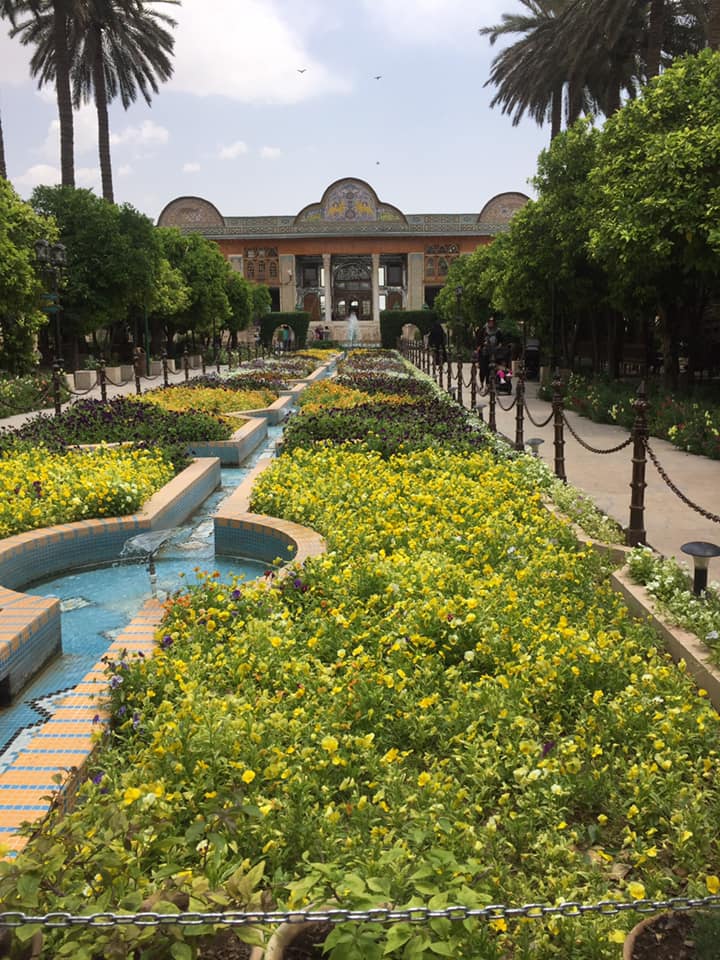 Narenjestan-e-Ghavam (also known as “Qavam House”) is a beautifully-set historic house built by the Qavam Family who were originally merchants from Qazvin (west of Tehran). The inside is ornately decorated with mirrors, inlay work and hand-painted tiles. The gardens, Bagh-e-Ghavam, boast seven types of orange trees and display beautiful symmetry.
Narenjestan-e-Ghavam (also known as “Qavam House”) is a beautifully-set historic house built by the Qavam Family who were originally merchants from Qazvin (west of Tehran). The inside is ornately decorated with mirrors, inlay work and hand-painted tiles. The gardens, Bagh-e-Ghavam, boast seven types of orange trees and display beautiful symmetry.
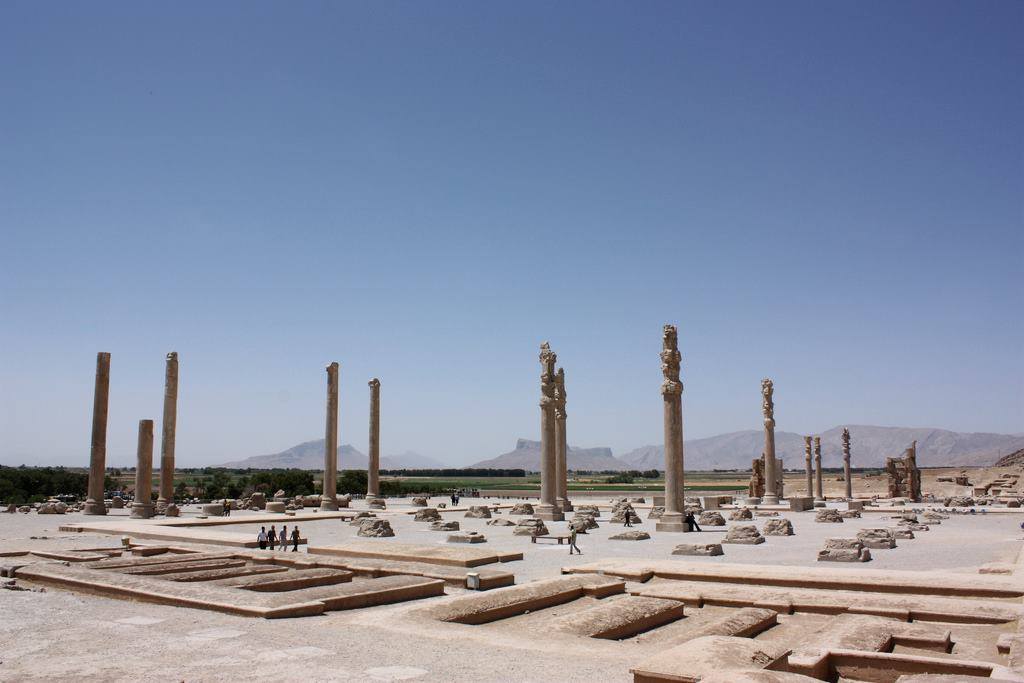 Persepolis was the ceremonial capital of the Achaemenid kings that tells the story of the Archaemenid Empire’s magnificence and grandeur, as well as its demise. The city wasn’t recovered until the 1930s, which is partly why it still survives so intact today. Construction of the site began under Darius the Great, but the complex was expanded upon by subsequent rulers and contains the remains of the palaces of Darius, Xerxes and Artaxerxes. The Tachara Palace is decorated with famous bas-reliefs depicting kings, courtiers and other gift-bearing representatives of tributary nations of the Persian Empire. The Persepolis Museum, thought to have once been a harem to the king’s consorts and concubines, displays a stone foundation tablet and other artefacts recovered during excavations.
Persepolis was the ceremonial capital of the Achaemenid kings that tells the story of the Archaemenid Empire’s magnificence and grandeur, as well as its demise. The city wasn’t recovered until the 1930s, which is partly why it still survives so intact today. Construction of the site began under Darius the Great, but the complex was expanded upon by subsequent rulers and contains the remains of the palaces of Darius, Xerxes and Artaxerxes. The Tachara Palace is decorated with famous bas-reliefs depicting kings, courtiers and other gift-bearing representatives of tributary nations of the Persian Empire. The Persepolis Museum, thought to have once been a harem to the king’s consorts and concubines, displays a stone foundation tablet and other artefacts recovered during excavations.
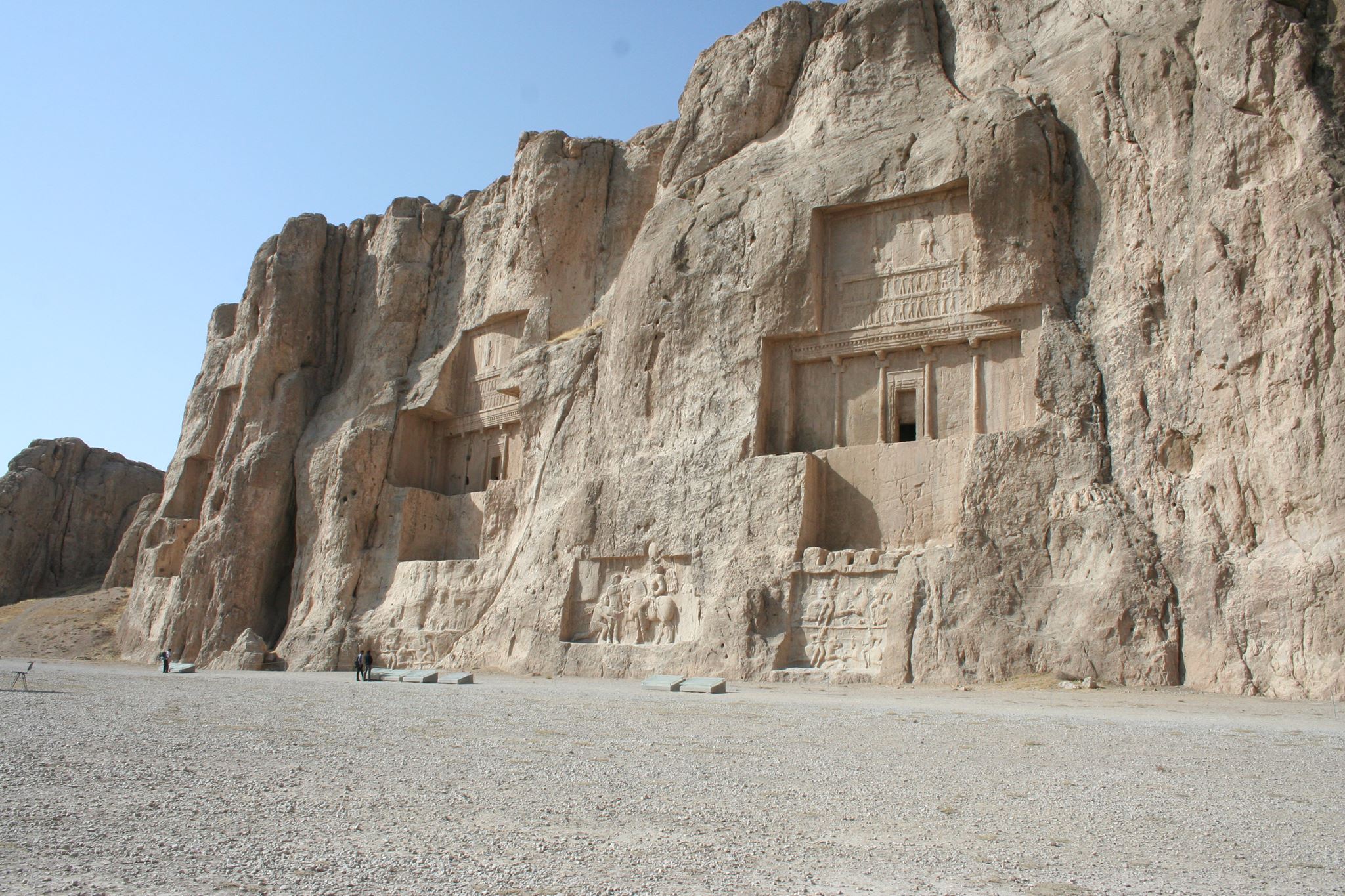 Naghsh-e-Rostam, a mooted UNESCO world heritage site, is a series of four rock-tombs, fashioned out of a cliff. Archaeologists think the tombs are those of Xerxes I, Artaxeres I, Darius I and Darius II. The tombs copy the model from Persepolis, showing the kings supported by figures of surrounding nations. Also carved into the cliff are seven Sassanian reliefs that show images of imperial conquests and royal processions, including Shapur I’s famous victory over the Roman Emperor Valerian.
Naghsh-e-Rostam, a mooted UNESCO world heritage site, is a series of four rock-tombs, fashioned out of a cliff. Archaeologists think the tombs are those of Xerxes I, Artaxeres I, Darius I and Darius II. The tombs copy the model from Persepolis, showing the kings supported by figures of surrounding nations. Also carved into the cliff are seven Sassanian reliefs that show images of imperial conquests and royal processions, including Shapur I’s famous victory over the Roman Emperor Valerian.
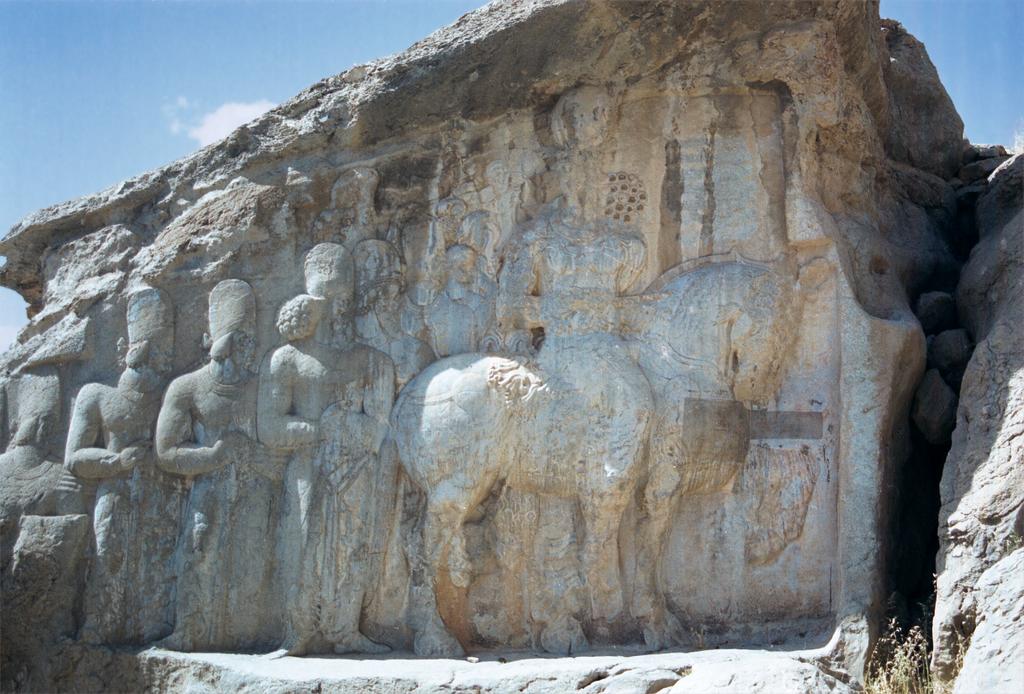 Naghsh-e-Rajab is a magnificent archaeological site dating back to the early Sassanid era, located near the ruins of the ancient Achaemenid city of Istakhr. It is the site of four limestone rockface inscriptions and bas-reliefs that feature the investitures of Ardeshir I and Shapur I, as well as Shapur’s military victory over the Romans.
Naghsh-e-Rajab is a magnificent archaeological site dating back to the early Sassanid era, located near the ruins of the ancient Achaemenid city of Istakhr. It is the site of four limestone rockface inscriptions and bas-reliefs that feature the investitures of Ardeshir I and Shapur I, as well as Shapur’s military victory over the Romans.
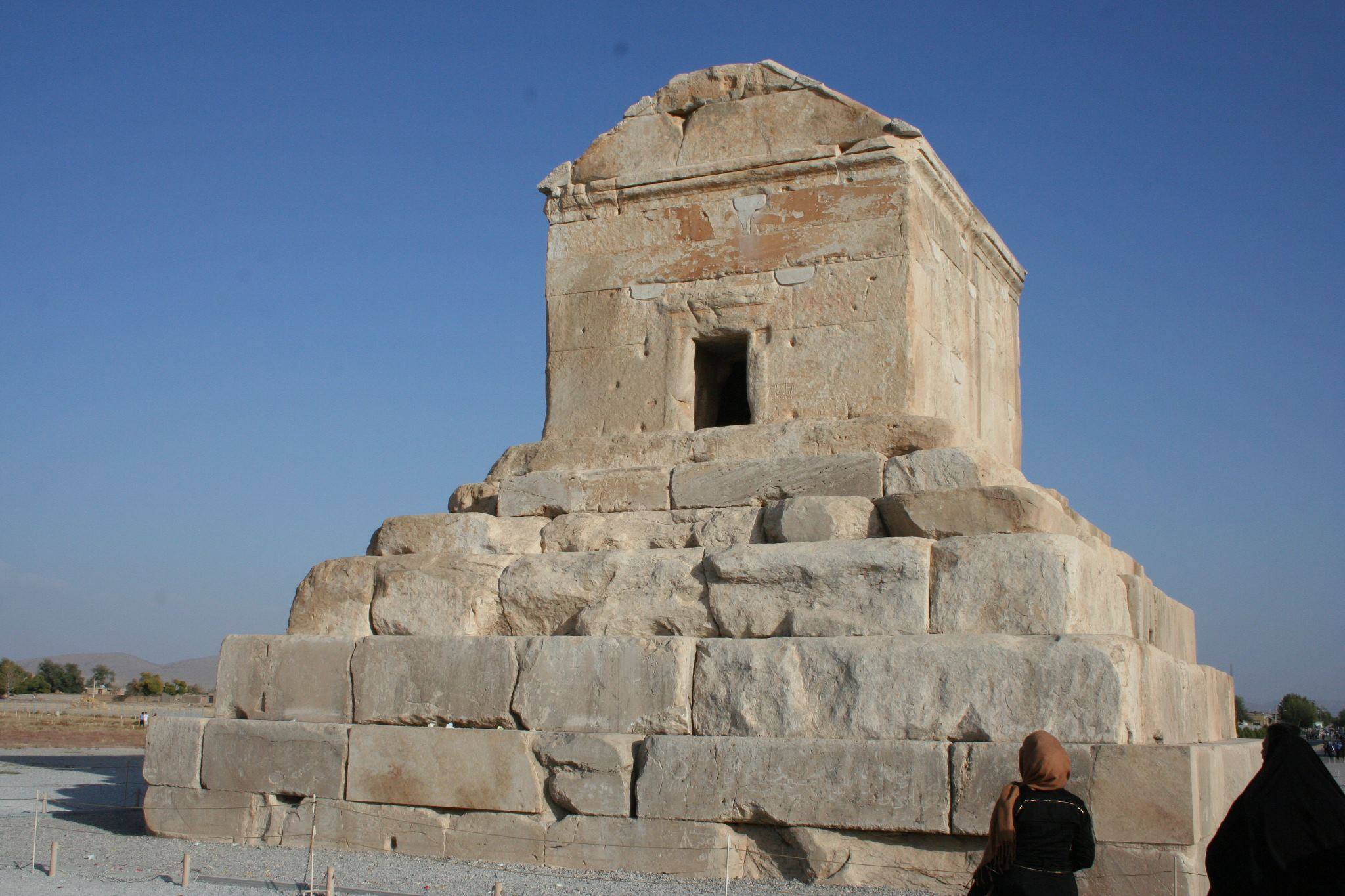 Passargadae was established as a city by Cyrus the Great (the founder of the Persian Empire) in about 546 BC, predating the famous site of Persepolis. The city houses Cyrus the Great’s simply-constructed tomb, which consists of six stone tiers supporting a modest rectangular burial chamber. The tomb has an unusually imposing architecture which combines styles of its contemporary civilizations. Also in the serene plain of Dasht-e-Morghab are the remains of Cyrus the Great’s several palaces made of black limestone plinth. Just north of the Palace is the Prison of Solomon, often mistaken for a sundial or fire-temple.
Passargadae was established as a city by Cyrus the Great (the founder of the Persian Empire) in about 546 BC, predating the famous site of Persepolis. The city houses Cyrus the Great’s simply-constructed tomb, which consists of six stone tiers supporting a modest rectangular burial chamber. The tomb has an unusually imposing architecture which combines styles of its contemporary civilizations. Also in the serene plain of Dasht-e-Morghab are the remains of Cyrus the Great’s several palaces made of black limestone plinth. Just north of the Palace is the Prison of Solomon, often mistaken for a sundial or fire-temple.
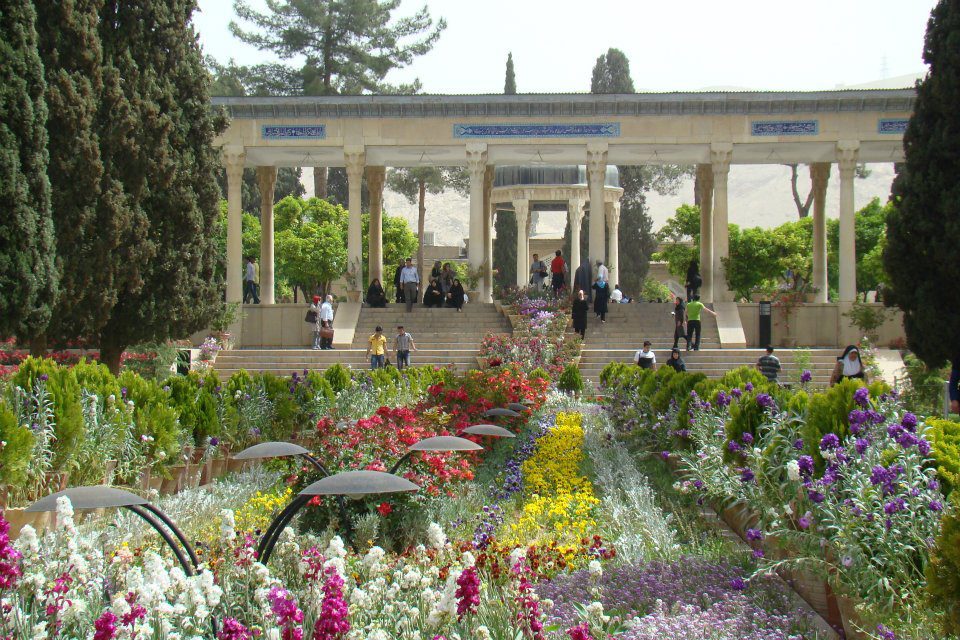 The Tomb of Hafez and its associated memorial hall, the Hāfezieh , are two memorial structures erected in the northern edge of Shiraz, Iran, in memory of the celebrated Persian poet Hafez. The open pavilion structures are situated in the Musalla Gardens on the north bank of a seasonal river and house the marble tomb of Hafez. The present buildings, built in 1935 and designed by the French architect and archaeologist André Godard, are at the site of previous structures, the best-known of which was built in 1773. The tomb, its gardens, and the surrounding memorials to other great figures are a focus of tourism in Shiraz.
The Tomb of Hafez and its associated memorial hall, the Hāfezieh , are two memorial structures erected in the northern edge of Shiraz, Iran, in memory of the celebrated Persian poet Hafez. The open pavilion structures are situated in the Musalla Gardens on the north bank of a seasonal river and house the marble tomb of Hafez. The present buildings, built in 1935 and designed by the French architect and archaeologist André Godard, are at the site of previous structures, the best-known of which was built in 1773. The tomb, its gardens, and the surrounding memorials to other great figures are a focus of tourism in Shiraz.
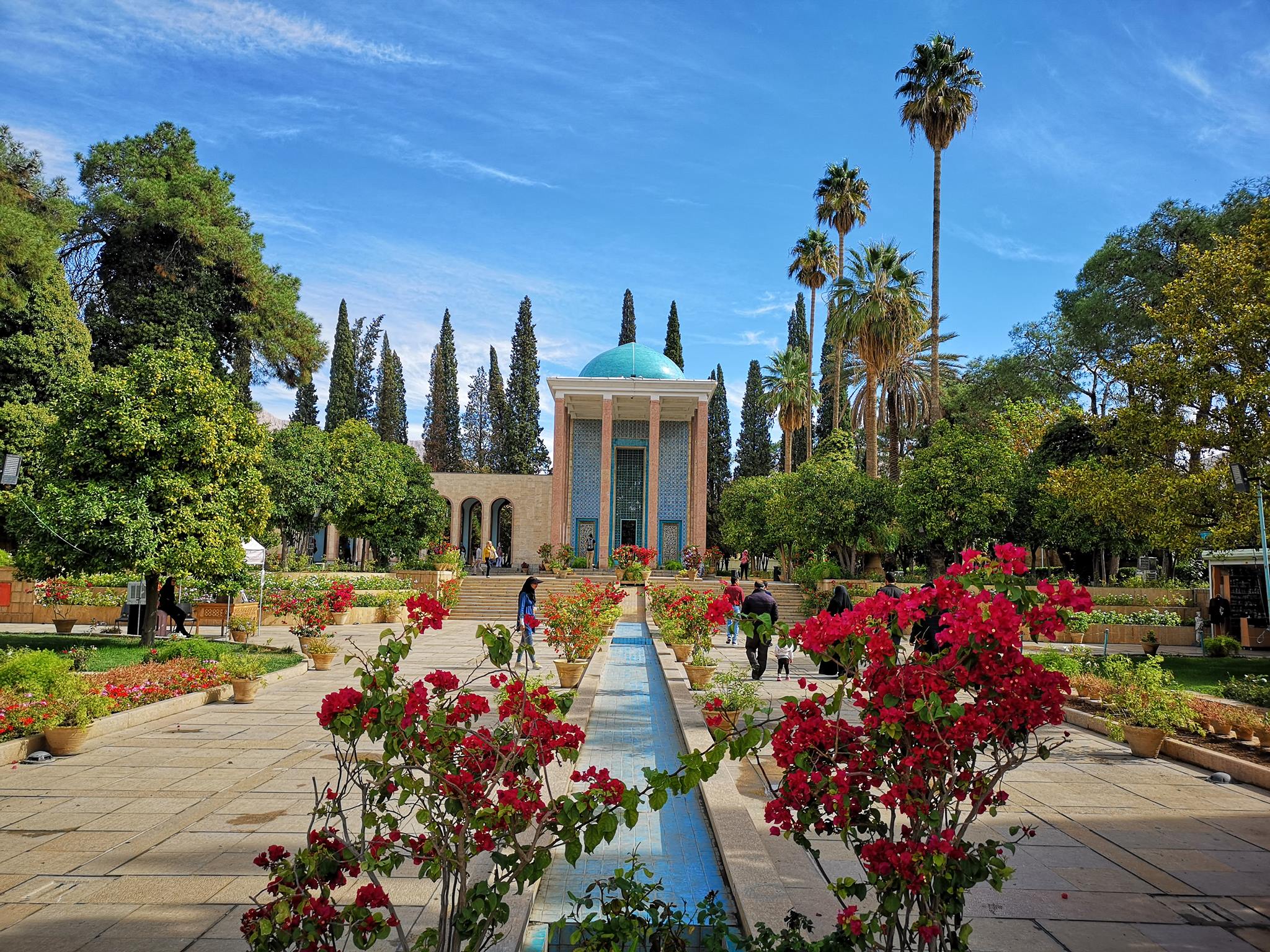 The Tomb of Saadi is a tomb and mausoleum dedicated to the Persian poet Saadi in the Iranian city of Shiraz. Saadi was buried at the end of his life at a Khanqah at the current location. In the 13th century a tomb built for Saadi by Shams al-Din Juvayni, the vizir of Abaqa Khan. In the 17th century, this tomb was destroyed. During the reign of Karim Khan was built a mausoleum of two floors of brick and plaster, flanked by two rooms. The current building was built between 1950 and 1952 to a design by the architect Mohsen Foroughi and is inspired by the Chehel Sotoun with a fusion of old and new architectural elements. Around the tomb on the walls are seven verses of Saadi’s poems.
The Tomb of Saadi is a tomb and mausoleum dedicated to the Persian poet Saadi in the Iranian city of Shiraz. Saadi was buried at the end of his life at a Khanqah at the current location. In the 13th century a tomb built for Saadi by Shams al-Din Juvayni, the vizir of Abaqa Khan. In the 17th century, this tomb was destroyed. During the reign of Karim Khan was built a mausoleum of two floors of brick and plaster, flanked by two rooms. The current building was built between 1950 and 1952 to a design by the architect Mohsen Foroughi and is inspired by the Chehel Sotoun with a fusion of old and new architectural elements. Around the tomb on the walls are seven verses of Saadi’s poems.
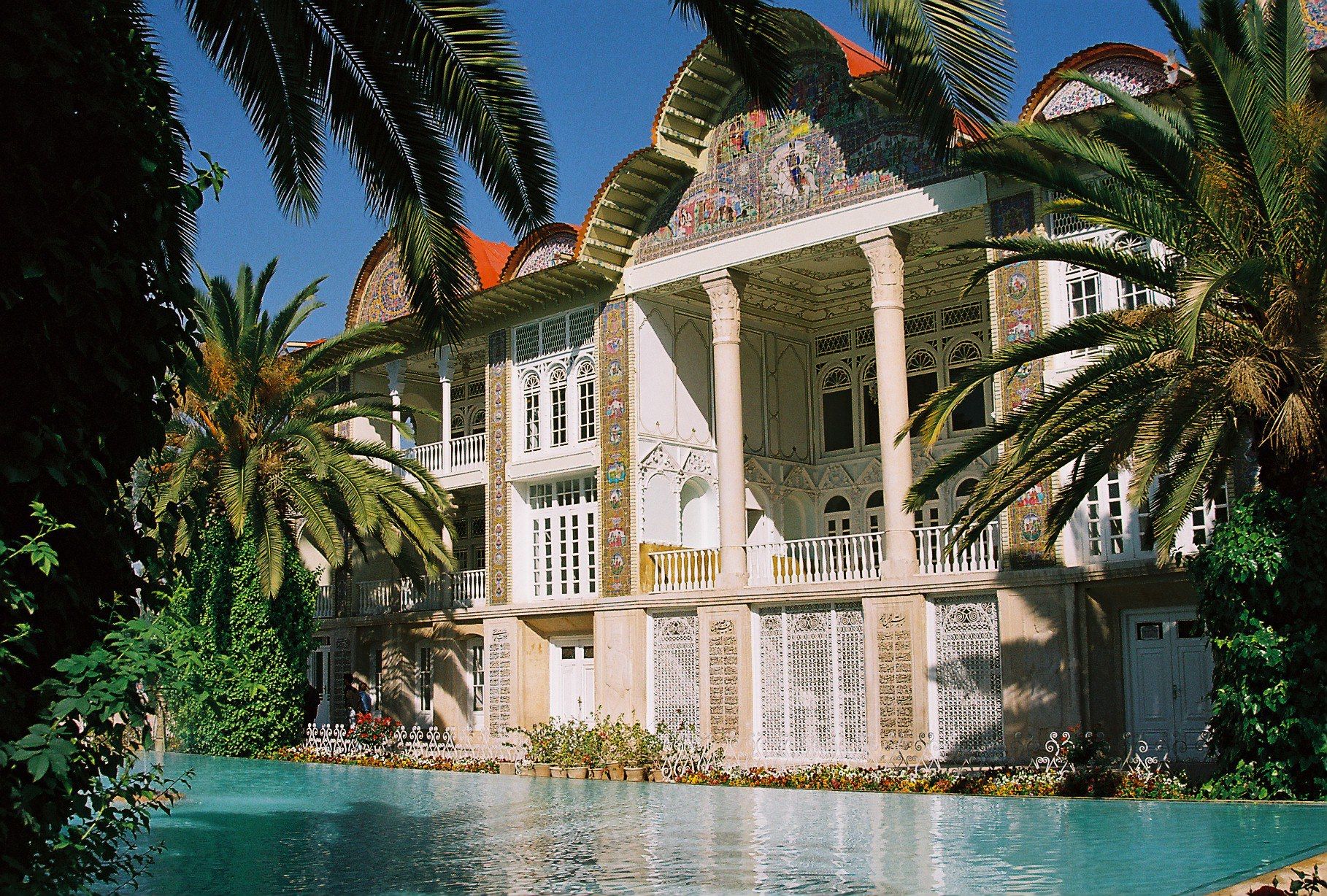 Eram Gardens in Shiraz is one of the most famous historical gardens in Iran. a garden named after one of the four gardens of Paradise described in the Quran .These gardens and the building within them were built in the middle of the 13th century, but were renovated and enhanced significantly during the Qajar dynasty. Eram owes its fame and importance to the botanical garden which is home to a verity of unique and rare plants. The main building in the gardens was built by Nasir-ol-Molk , the creator of The Pink Mosque and is ornamented by numerous inscriptions and alluring paintings.
Eram Gardens in Shiraz is one of the most famous historical gardens in Iran. a garden named after one of the four gardens of Paradise described in the Quran .These gardens and the building within them were built in the middle of the 13th century, but were renovated and enhanced significantly during the Qajar dynasty. Eram owes its fame and importance to the botanical garden which is home to a verity of unique and rare plants. The main building in the gardens was built by Nasir-ol-Molk , the creator of The Pink Mosque and is ornamented by numerous inscriptions and alluring paintings.
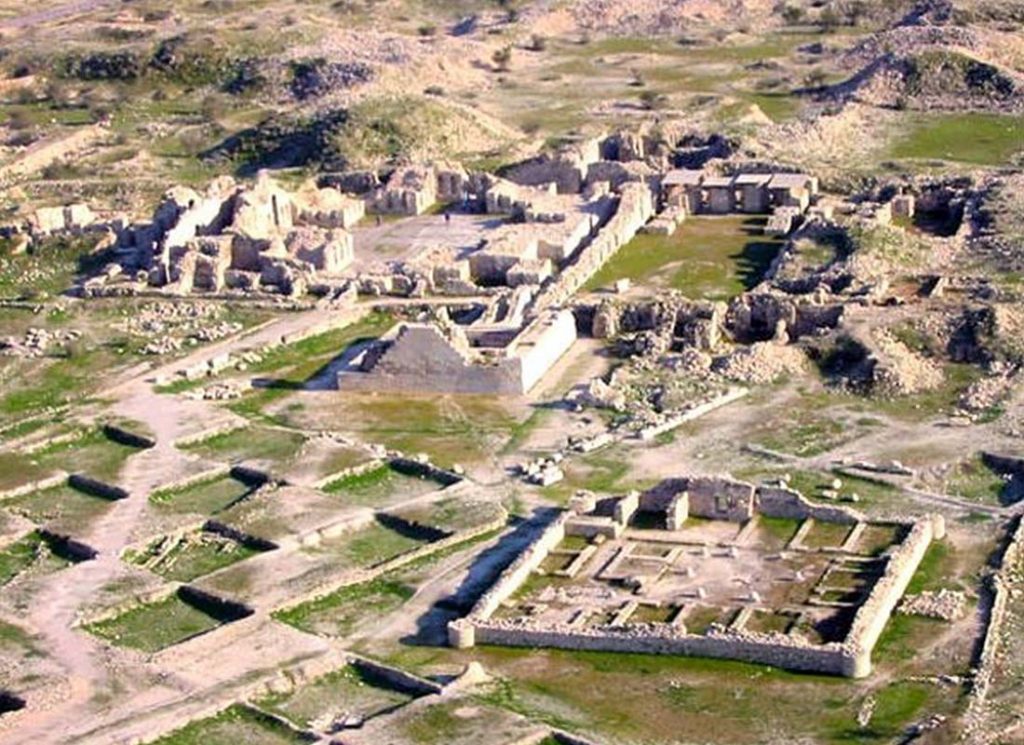 Bishapour (meaning ‘Shapour’s city) was an ancient metropolis built by King Shapour in 266 AD, with the help of about 70,000 captured Roma soldiers. It was home to a community of 50,000-80,000 people before falling to ruin in the 10th century. The remains of this once-magnificent city include the ruins of the Palace of the Sassanid King Shapour and the fragmented structures of a second palace, built for the defeated Emperor Valerian in a style similar to that of Persepolis. Shapour’s Palace contains a cruciform-shaped hall and a large court, which still possesses its original paintings, decorations and stones. It is bordered with a series of colourful mosaics that combine Iranian and Roman motifs in images of nobles and ladies, dancers and musicians.
Bishapour (meaning ‘Shapour’s city) was an ancient metropolis built by King Shapour in 266 AD, with the help of about 70,000 captured Roma soldiers. It was home to a community of 50,000-80,000 people before falling to ruin in the 10th century. The remains of this once-magnificent city include the ruins of the Palace of the Sassanid King Shapour and the fragmented structures of a second palace, built for the defeated Emperor Valerian in a style similar to that of Persepolis. Shapour’s Palace contains a cruciform-shaped hall and a large court, which still possesses its original paintings, decorations and stones. It is bordered with a series of colourful mosaics that combine Iranian and Roman motifs in images of nobles and ladies, dancers and musicians.
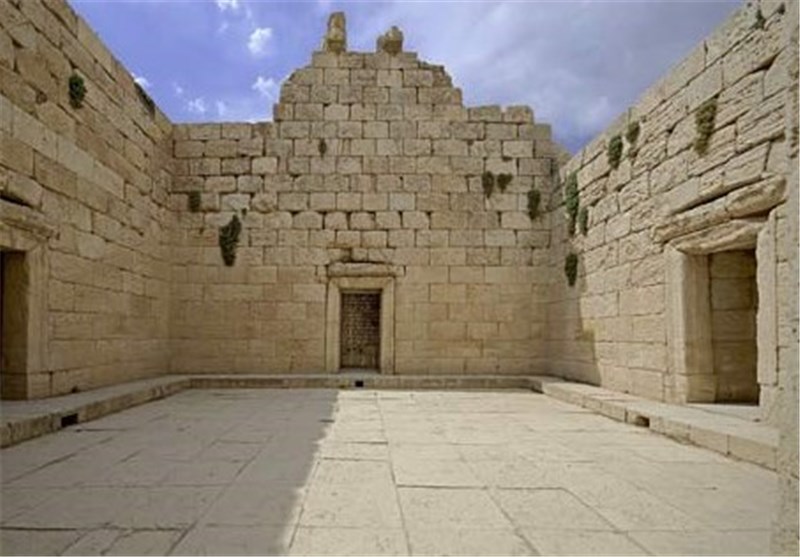 The building known as the Temple of Anahita at Bishapour is actually an unidentified structure located deeper than the other rooms of the palace. The structure, with its pleasant, harmonious dimensions, can only be reached by descending a long flight of stairs. Once you’ve descended the stairs, you will find yourself on a small square surrounded by high walls. This square must have been a pool surrounded by sidewalks. The doors in the walls give access to a corridor that surrounded the square and gave access to the nearby aqueduct. On top of two of the walls there used to be triangle-shaped structure that looked like roof supports. This is not the case, as the sanctuary was open and the triangle-shaped structures supported large bull imposts. One of these can now be seen in the Western Mosaic Hall of the Palace.
The building known as the Temple of Anahita at Bishapour is actually an unidentified structure located deeper than the other rooms of the palace. The structure, with its pleasant, harmonious dimensions, can only be reached by descending a long flight of stairs. Once you’ve descended the stairs, you will find yourself on a small square surrounded by high walls. This square must have been a pool surrounded by sidewalks. The doors in the walls give access to a corridor that surrounded the square and gave access to the nearby aqueduct. On top of two of the walls there used to be triangle-shaped structure that looked like roof supports. This is not the case, as the sanctuary was open and the triangle-shaped structures supported large bull imposts. One of these can now be seen in the Western Mosaic Hall of the Palace.
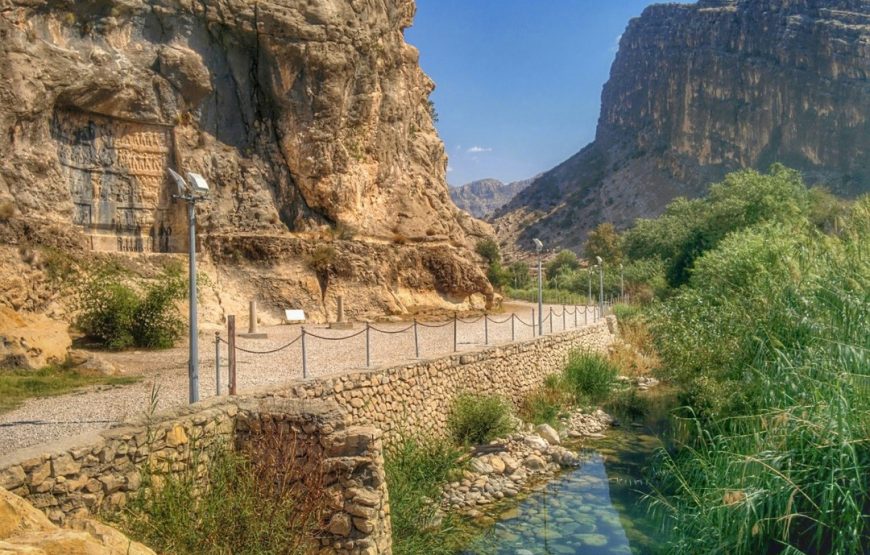 Across the river from the city of Bishapour are a series of beautiful carvings from 260AD known as Tang-e-Chogan.
Across the river from the city of Bishapour are a series of beautiful carvings from 260AD known as Tang-e-Chogan.
They tell the story of Shapour I’s victory over the Romans, including his capture of Roman Emperor Valerian and a large number of his soldiers, as well as the surrender of Philip the Arab. Further carvings show scenes from the lives of later kings, Bahram I, II and III and Shapour II. There are also investitures with Azura Mazda and Anahita bestowing legitimacy and further victories over Arab tribes.


